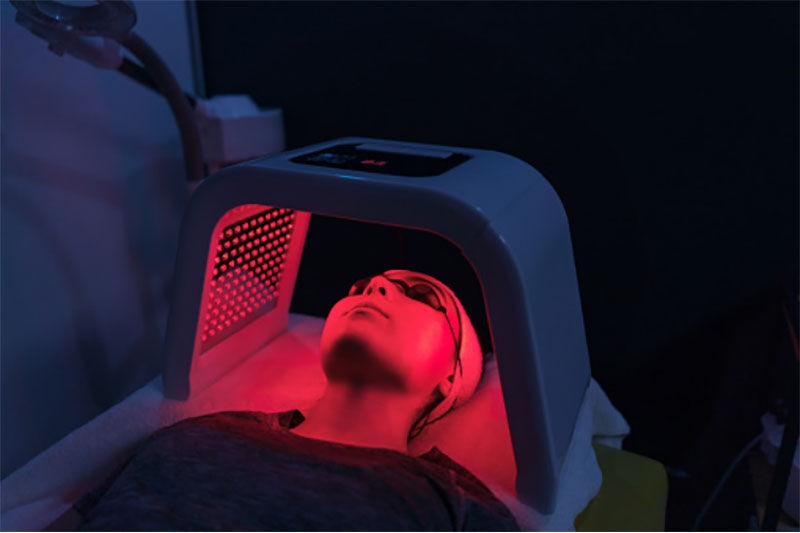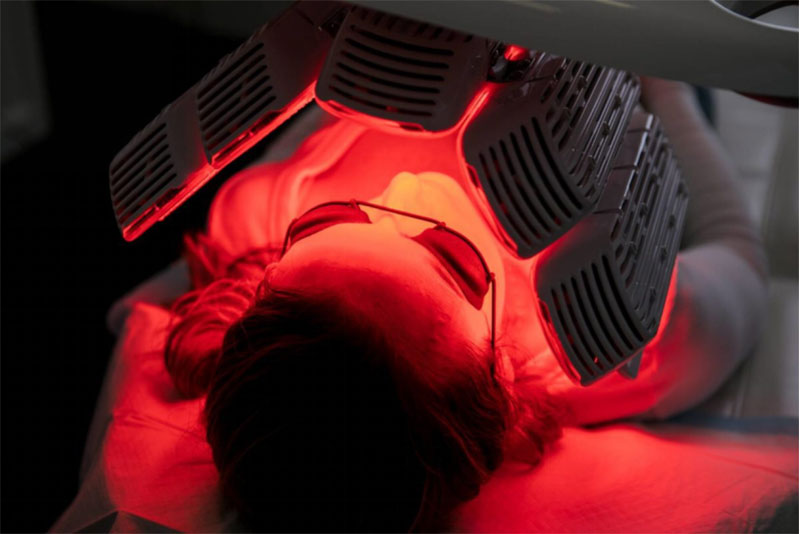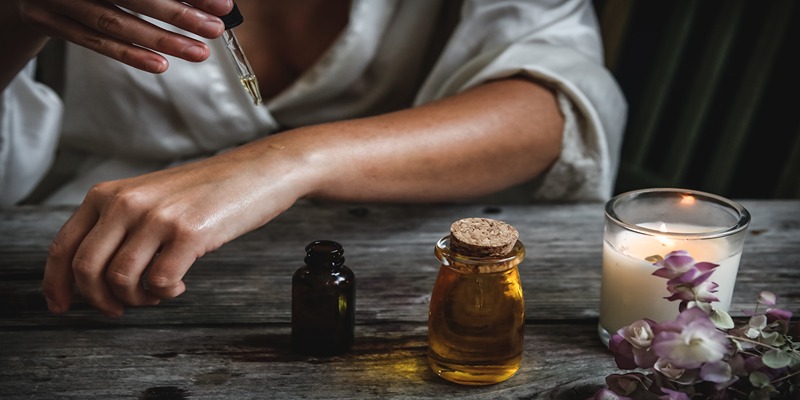Red light therapy is becoming a popular alternative treatment for many medical conditions. It's natural, safe, and painless – making it an attractive choice for those looking to manage their health problems without the risks associated with traditional medications or treatments.
Not only that, but research into red light therapy has revealed several potential benefits beyond treating various ailments ranging from skin health to joint stiffness. In this post, we'll look at what exactly red light therapy is, how it works, and some of its possible benefits to better understand this interesting new natural remedy.
Red Light Therapy and How Does It Work

Red light therapy is a form of light therapy that uses red or near-infrared light to treat various medical conditions. It works by exposing the body to low levels of red and near-infrared lights, which stimulate natural healing processes within the body. This can be done through either a handheld device or a specialized lamp. The light penetrates beneath the skin's surface, stimulating cells and activating their natural repair mechanisms.
The most common benefits of red light therapy include improved skin health, joint pain relief, reduced inflammation, and improved wound healing. Red light therapy has also been studied as an alternative treatment for depression, migraines, Alzheimer’s disease, age spots, and more. While research on many of these areas is still in its early stages, the potential benefits of red light therapy are encouraging.
Red light therapy has also been linked to improved sleep quality and energy levels. Studies have found that people who used red light therapy reported improved overall well-being, with better sleep quality and increased energy levels. Furthermore, research suggests that red light therapy can also help regulate the body’s circadian rhythm, leading to better restorative sleep and a more balanced lifestyle.
Some studies suggest that red light therapy is beneficial for hair health. Red light therapy may stimulate hair growth by improving circulation to the scalp and activating natural repair processes within skin cells at the follicle level.
Types of Red Light Therapy

Red light therapy can be done with different types of equipment. It can be done using a handheld device or a specialized lamp. The wavelength, intensity, and duration of the red light used are important considerations when choosing a type of red light therapy.
- Handheld Devices: These devices are a popular choice for those looking to use red light therapy in the comfort of their own home. Most handheld devices come with adjustable settings that allow you to customize the intensity and duration of your treatment.
- Red Light Therapy Lamps or Panels: These larger panels are typically used in professional settings such as spas, salons, and gyms. They offer more intense levels of exposure than handheld devices and can cover larger areas at once.
- Low-Level Laser Therapy (LLLT): This red light therapy uses cold lasers instead of LED lights, which release photons into the body’s cells directly, stimulating natural healing processes within them. Practitioners commonly use it for more severe medical conditions, such as joint stiffness, carpal tunnel syndrome, and arthritis.
These are just a few types of red light therapy available. Speaking with your doctor or healthcare provider before deciding which type is right for you is important. They’ll be able to advise which type may be most beneficial based on your individual needs.
Benefits of Red Light Therapy
- Improved Skin Health: Red light therapy helps to reduce wrinkles, age spots, and other signs of aging. It also can improve overall skin tone and texture, leading to smoother and brighter-looking skin.
- Pain Relief: Red light therapy effectively treats joint pain due to inflammation and muscle soreness.
- Wound Healing: Because red light stimulates the body’s natural healing processes, it can speed up wound healing time by encouraging cell regeneration and collagen production, both important for properly closing wounds quickly and efficiently.
- Reduced Inflammation: Red light therapy is an effective anti-inflammatory agent that can help reduce swelling from injuries or chronic conditions like arthritis or fibromyalgia.
- Better Sleep Quality: Red light therapy can help regulate the body’s circadian rhythm, leading to better sleep quality and more restful nights.
- Increased Energy Levels: Studies have shown that red light therapy can increase energy levels throughout the day, as well as an overall sense of improved well-being.
- Hair Health: Red light therapy may benefit hair health by stimulating growth at the follicle level and improving circulation to the scalp area.
- Brain Health: Research suggests that red light therapy may help improve focus, alertness, and concentration while also reducing symptoms associated with depression.
- Improved Vision: While more research is needed, some studies have shown that red light therapy may help improve visual acuity and night vision.
Red light therapy is an exciting natural remedy with various potential benefits for physical and mental health. While research on many of these areas is still in its early stages, the potential benefits of this new light therapy look promising. Red light therapy may be worthwhile if you want to try something new to enhance your overall well-being. Talk to your doctor about whether it could fit you well.
Potential Side Effects of Red Light Therapy
While red light therapy is generally safe and non-invasive, there are some potential side effects that you should be aware of. These include mild skin irritation in the area exposed to the light, headaches, and nausea. In rare cases, it can cause eye irritation if not used correctly. Speaking with your doctor or healthcare provider before starting any red light therapy treatment is important. They can advise which type may be most beneficial based on your needs and answer any questions about its safety.
Always follow all directions for use care when using a device at home. Red light therapy promises to provide many health benefits with few side effects. It may be worth considering if you’re looking for a natural remedy to improve your health. Talk to your doctor about whether this therapy could be right for you.
FAQS
How often should you do red light therapy?
The frequency of sessions will depend on the type of device and treatment you’re using. It is recommended to use a red light therapy device 2-3 times weekly for best results.
Skin tightening using red light treatment?
Red light therapy can help reduce wrinkles and improve skin tone and texture. It can also help improve collagen production, leading to firmer and tighter-looking skin.
Does red light build collagen?
Yes, red light therapy has been shown to increase collagen production, leading to firmer and smoother-looking skin.
Conclusion
Red Light Therapy has already produced positive results in various healthcare settings, showing promise in addressing depression, acne, arthritis pain, and more. With an increasing number of studies further supporting the efficacy of this treatment method, its popularity continues to grow. For those interested in utilizing red light therapy as part of their health plan, ensure that a qualified professional oversees the treatments and provides guidance on frequency and dosage. Red light therapy can create immediate and long-term user benefits from beautifying acne-prone skin to easing symptoms such as pain and fatigue.




